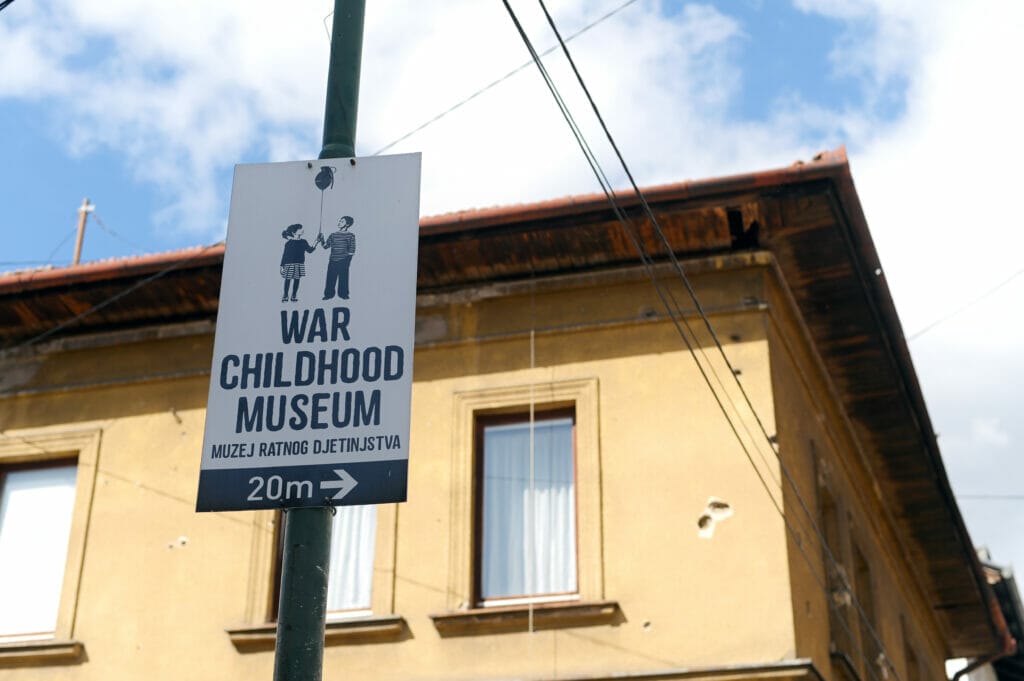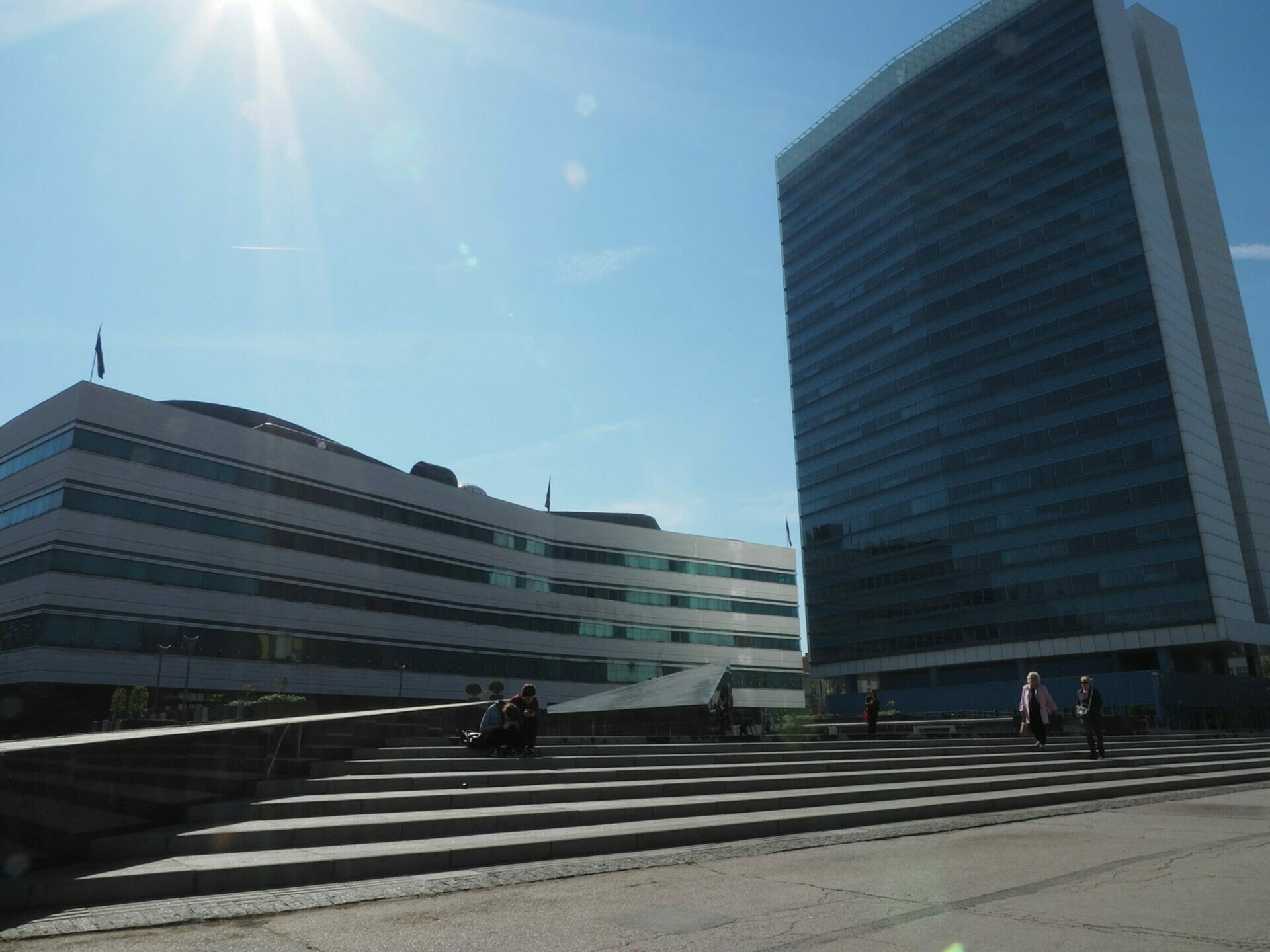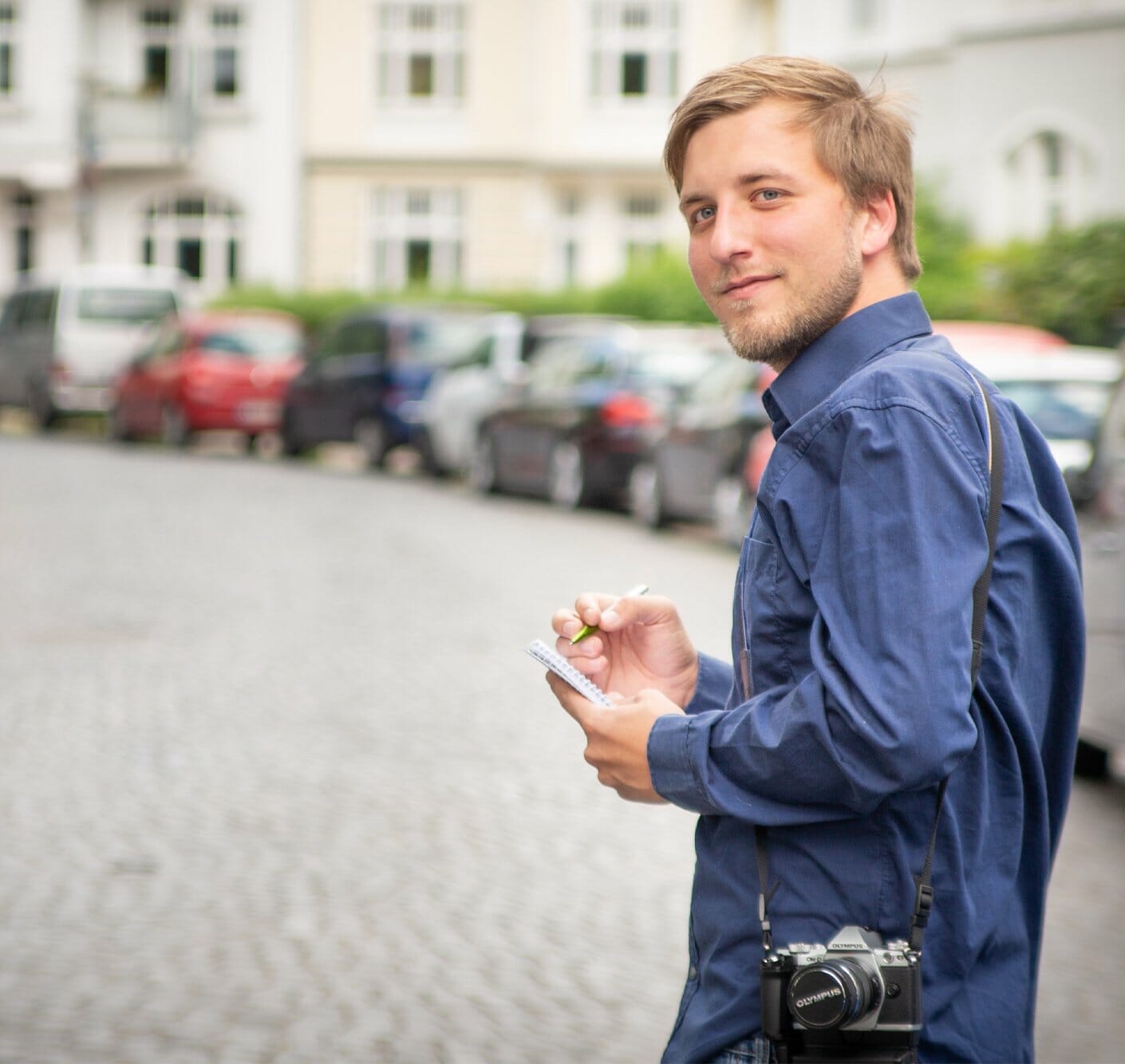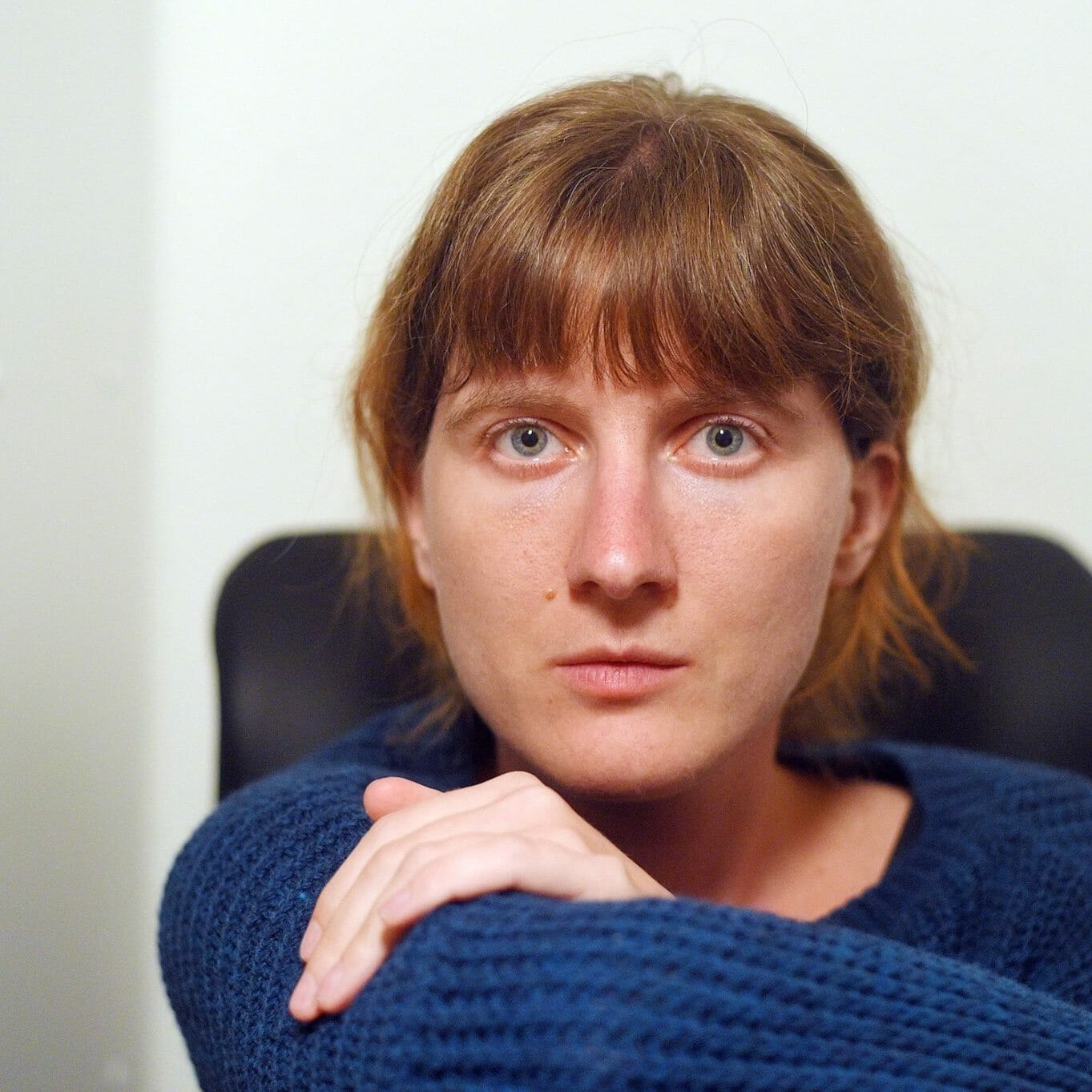War Childhood Museum and YIHR: Reconciliation through Sharing Experiences
Internationally renowned, little noticed locally: By chance, tourists in Sarajevo can hardly pass the War Childhood Museum (Muzej ratnog djetinstva).

It is located not far from the center of the capital of Bosnia and Herzegovina – up a small mountain slope, in a backyard next to a supermarket the inconspicuous entrance can be found. A few small signs guide the way to this cultural pearl. At first glance, they are reminiscent of an artwork by Banksy and thus catch the eye despite its small size.
Remainings like a jewel
As far as managing director Amina Krvavac knows, previously, old chairs were stored in the largely windowless building, which is in public hands. “But we are now paying the normal commercial price,” she says with a smile. The War Childhood Museum has received little support from the canton. The conditions may not be ideal, but the exhibition shown here is always impressive: garments, toys, everyday objects tell the stories of children and how they experienced war. In addition, the memorabilia in the War Childhood Museum are exhibited individually in showcases or hung from the ceiling. Each object is perfectly illuminated, as if it were not toys, clothes and leftovers, but valuable jewels and antiques.
The dark walls highlight the objects that are brightly illuminated particularly clearly. Jeans, school bags and a delicate faded top hang from the ceiling. A swing got a single room. In showcases are toys, books and food packaging and one wall is completely covered by a construct of steel pipes – an old climbing frame. The latter is the only exhibit that can be seen here permanently. The other, more easily interchangeable memorabilia, change at irregular intervals. Around 50 of them can always be seen at the same time.
Invitation to empathize
Signs and colored markings lead through the museum and point out the exhibits, which are suitable for children, so they do not describe particularly bad experiences. Krvavac explains that these can also serve as a guide for adults who are unsure how much suffering they can endure.
The short texts accompanying the exhibits are written by those who submitted the memorabilia. They invite very immediately and directly to empathize. Sometimes the visitors are in a living room in the middle of the war and learn how a lamp was made here. Sometimes they accompany a child on the way to school or learn how a playground could become a place of horror.
War Childhood Museum: A Simple Question Gives The Impetus
It all started with a Facebook post in 2011. Museum founder Jasminko Halilovic was surprised, how many reactions he received to a simple question – “What was war childhood for you?” – and realized: “There is a need.”
Starting in 2014 with memories in their own country, more than 3000 exhibits are now stored in the archive of the War Childhood Museum. Extended by war refugees from Syria in Lebanon and Serbia or children in the Gaza Strip. In Ukraine, the institution is currently setting up its own office to document the war from the perspective of the growing generation. “You humanize children in war,” says Krvavac about the approach.
For the managing director, who herself comes from children’s rights, it is important to show an expanded picture of how wars affect children. It is about empowering the children instead of pity by the visitors. That’s why the stories are not only about hardship and misery, but about everyday life in war. Sometimes the anecdotes simply wrestle the visitors with a snuff. About the approach, Krvavac says:
We all shared the idea of seeing dignity and the importance of children and their experiences as a meaningful platform.
[/et_pb_testimonial][/et_pb_column][/et_pb_row][/et_pb_section]New trouble spots, universal experiences
While at the beginning the focus was on experiences in one’s own country, the image of the initiators has also expanded with the new trouble spots of the present. “There are some universal aspects to the experience,” Krvavac describes. Jasminko Halilovic, co-founder of the War Childhood Museum and head of the Kiev office, knows exactly what this means.
The individual experiences are often more decisive than the context or the place. “The experiences of refugees from Syria, Bosnia and Ukraine are probably more similar than those of two people in Bosnia, if one was a refugee and one was not,” Halilovic explains.
When visitors and participants who have experienced war themselves gain this insight, it is often an enriching experience. “It’s encouraging if they can connect these cross-border stories and different contexts,” Halilovic continues.
This approach, not only to focus on the war in Bosnia and Herzegovina, the team has pursued from the beginning:
Our intention was to create an international platform for people to share, listen and learn together.
Jasminko Halilovic
Founder of the War Childhood Museum
Meanwhile, the War Childhood Museum has the confirmation for the thesis. He has heard from participants several times that the donation of an object gives more importance to one’s own history in conjunction with the experiences of today’s generation, says Halilovic.
New approach
The discussions would of course be accompanied – whenever necessary – by psychological experts. The difference between the beginning of the project with its generation, which has grown up in the meantime, and currently actually still minors, must also be taken into account in the approach. The fresher the war experience, the more important it is that people receive psychological support during the interviews, a kind of accompaniment and guidance, and “permission to speak.”
Professionally implementing this difference between current and former war children was a big deal for them. In the meantime, the concept has been developed in such a way that it is inclusive in order to integrate both former and current war children into the project.
YIHR creates direct exchange
A different approach to the history of the former Yugoslav countries has been chosen by the Youth Initiative for Human Rights (Inicijativa mladih za ljudska prava). Through travel and exchange in the region, young people should deal with the events and the different perspectives, explains Branka Vierda, coordinator of the Justice and the Reconciliation programme at YIHR.
This is not always easy due to the prevailing narratives in the countries and institutions. “The memorial to the victims of the civil wars in Podgorica is the only one of its kind in the former yugoslavian countries,” she gives an example.
Problematic narratives
Instead, a visit to a museum in Vukovar is mandatory, which she considers to be quite problematic. “It doesn’t show the whole picture. The guides are mostly soldiers,” she says. They would have their own emotional reasons for participating in such a project. However, their view does not necessarily invite to reconcile. The result: “The students come back nationalized.”
Of course, it is important to explain to the young people that the inhabitants of Vukovar had experienced great suffering in the 1990s. At the same time, there has long been a peaceful coexistence and a normal life for everyone.
Other museums took up individual events, but did not place them in the overall context. The War Childhood Museum in Sarajevo takes a different, holistic and emotional approach, Vierda praises. “But it doesn’t show the whole perspective,” she notes, that here the historical events take a back seat.
No common definitions
To make reconciliation more difficult, there are not even common definitions for the respective wars. Accordingly, school lessons in the respective countries are based on their own narratives. The “fatherland” war in Croatia, for example, does not include Croatian crimes in neighboring Bosnia and Herzegovina.

Together with the young people, the Youth Initiative for Human Rights therefore worked on a collection of common narratives that would be worked out and negotiated with each other. “We went to the places where the worst atrocities happened,” Vierda explains. Through discussions with different groups of people, their own research and guidance, they worked together in three years on a book that summarizes the results. “This process of shared narratives and memories is important,” Vierda emphasizes.
History to be continued
The book should already show in its style that history is always continued. She therefore considers a ring binder to be the right format: it can be gradually supplemented. Should what the Youth Initiative for Human Rights has worked out with the young people find its way into school books that are used in regular history lessons? “This is a utopia,” says Vierda. However, they would have contact with teachers and NGOs.
But after more than 20 years, this is only the first step towards social development in which history should no longer be institutionalized. Here again the interface to the War Childhood Museum in Sarajevo can be observed: to develop understanding for the experiences and stories of others.
Vorgeschlagene Beiträge

Elections in Bosnia and Herzegovina: A system of separation
[mc4wp_form id=239488]



Leave a Reply
You must be logged in to post a comment.